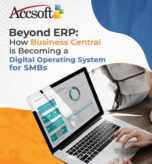
Microsoft Dynamics GP, known traditionally as Great Plains, has served as the enterprise resource planning platform for many businesses for decades. However, change is constant for businesses, and these companies are starting to transition to Microsoft Dynamics 365 Business Central. This newer generation of cloud ERP provides scale and integration while driving functionality that enables today’s complex business environment. For organizations willing to make that transition, the process is relatively easy through a partnership between Microsoft and its channel network. Here is how they are doing it.
1. Comprehensive Analysis and Planning
Before initiating the migration process, Microsoft and its partners analyze the existing GP system in detail. This includes:
Identifying Customizations:
Reviewing customizations and third-party integrations in GP to understand their applicability in BC.
Data Review:
Reviewing the volume, quality, and complexity of data for smooth transfer.
Business Process Evaluation:
Mapping current processes to Business Central’s capabilities, thus identifying opportunities for improvement.
2. Migration Tools and Accelerators
To make the migration process easier, Microsoft offers strong tools, including:
Intelligent Cloud Insights:
This tool allows businesses to connect GP to Business Central while keeping on-premises functionality in place during the transition. This tool facilitates a hybrid approach.
Data Migration Toolkit:
This is a solution specifically designed for transferring master data, historical transactions, and configurations from GP to BC with minimal manual intervention.
In addition, Microsoft partners typically develop their proprietary tools and scripts to further automate and enhance the process.
3. Expertise from Certified Partners
Microsoft’s extensive partner ecosystem is an important component of migrations. These certified experts provide:
Industry-specific knowledge:
Tailoring the migration approach to the specific needs of industries like manufacturing, retail, or professional services.
Project management:
Execution with minimal disruption to daily operations.
Training and Support:
Educate end-users about the interface and features of Business Central and make them use it.
4. Cloud-First Benefits
Benefits of adopting Business Central, many in terms of cloud-first benefits are:
Automatic Updates:
Get the latest features and security updates in an automated process without manual effort.
Seamless Integrations:
Leverage native integration to Microsoft 365, Power BI, and other Azure services.
Scalability:
Ability to grow through flexible cloud resources that adjust according to the needs of the business.
5. Risk Mitigation and Continuous Support
To minimize risks, Microsoft, along with its partners, will:
Pilot the Migration:
It would be migrated in a controlled environment before its full deployment.
Address Data Sensitivity:
Data security standards and regulations are met.
Provide Ongoing Support:
After migrating, support to resolve issues and enhance any performance concerns.
Conclusion
Migrating from Dynamics GP to Business Central may seem like a daunting task, but with the right tools, expertise, and planning, Microsoft and its partners ensure a smooth transition. By embracing Business Central, organizations unlock the potential of a modern ERP system designed for the digital age. If you’re considering this migration, reach out to a certified Microsoft partner to explore how they can tailor the journey to your business needs.







